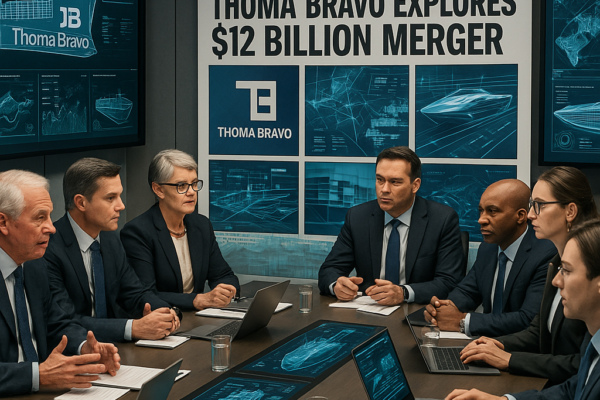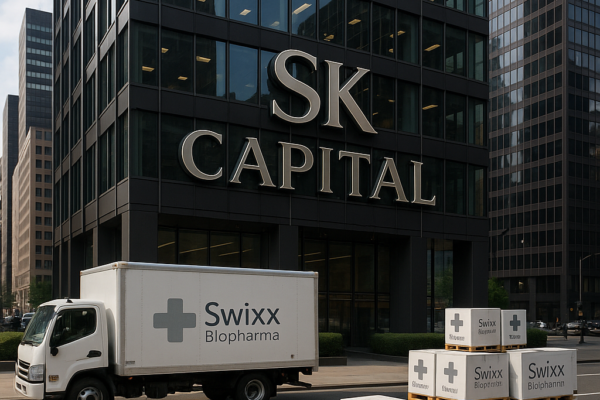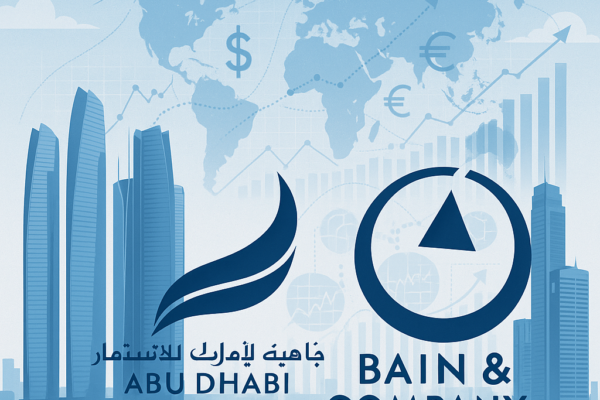German chemical giant BASF SE has initiated a pivotal divestiture process for its coatings division, valued at approximately €6 billion ($7 billion), with binding bids from shortlisted private equity firms Carlyle Group, KPS Capital Partners, Lone Star Funds, Platinum Equity, and strategic bidder Akzo Nobel due in August 2025[1][2][3]. This transaction represents a critical component of CEO Markus Kamieth’s comprehensive corporate restructuring strategy, launched in response to persistent energy cost pressures, softening Chinese demand, and geopolitical trade tensions that prompted a recent profit warning[8][13]. The coatings unit—generating €4.3 billion in 2024 sales through automotive OEM, refinish, and industrial coatings—has attracted intense bidding interest despite broader sector headwinds[15][16]. The outcome will significantly influence competitive dynamics in the global specialty chemicals landscape while testing private equity’s appetite for complex industrial assets amid economic uncertainty.
💼 M&A / PE diligence in 24 hours? Yes, thanks to AI!
Strategic Imperatives Driving BASF’s Portfolio Transformation
Leadership Vision Under Markus Kamieth
Since assuming leadership in April 2024, CEO Markus Kamieth has accelerated BASF’s strategic pivot through his “Winning Ways” initiative, which categorizes businesses into core segments and standalone units targeted for divestiture[11][12]. The coatings division falls squarely into the latter category, deemed non-essential despite its market-leading positions in automotive coatings and surface treatments[11][15]. Kamieth’s restructuring philosophy prioritizes capital discipline, with explicit targets to reduce expenditures while distributing €12 billion to shareholders through 2028 via dividends and future buybacks[11]. This strategic shift responds directly to structural challenges: German production costs remain 30% above global competitors, while Chinese demand—historically accounting for 25% of BASF revenue—has deteriorated amid trade tensions[8][10]. The coatings sale follows February’s $1.15 billion divestment of Brazilian decorative paints to Sherwin-Williams and precedes a potential €20 billion IPO of the agricultural chemicals unit, collectively representing the most significant portfolio overhaul in BASF’s 160-year history[17][18][19].
Financial Pressures and Market Realities
BASF’s July 2025 profit warning underscored the urgency behind the coatings divestiture, with management slashing EBITDA guidance by €700 million to €7.3-7.7 billion amid U.S. tariff impacts and persistent demand weakness[8][13]. The coatings division itself faces margin compression from raw material volatility and automotive sector decarbonization pressures, though it maintains technological leadership in electrophoretic coatings and sustainable formulations[15][16]. Divesting this capital-intensive business would immediately strengthen BASF’s balance sheet, potentially freeing €2.5 billion in debt capacity according to banking sources[20]. More fundamentally, the sale aligns with Kamieth’s explicit strategy to “unlock value of standalone businesses” that lack integration synergies with BASF’s core Verbund production model[11][17]. This strategic calculus explains why BASF retained Bank of America and JPMorgan—advisors with deep specialty chemicals expertise—to structure a competitive auction despite macroeconomic uncertainties[1][20].
Anatomy of a Premium Asset: The Coatings Division
Market Position and Technological Capabilities
The coatings division represents BASF’s seventh-largest global industrial coatings operation, with particular strength in automotive OEM coatings where it holds 22% market share in Europe and 18% in North America[15]. Its technological differentiation stems from proprietary CathoGuard® 800 electrocoat systems and iGloss® low-VOC refinish products, which have become industry standards for sustainability-driven manufacturers[15][16]. The division’s 2023 innovation pipeline generated €380 million from products launched within five years, reflecting above-industry R&D productivity[15]. However, the business faces strategic challenges: automotive segment exposure (60% of revenue) creates vulnerability to electric vehicle transition disruptions, while decorative coatings contribute just 15% of sales following the Brazil divestiture[15][17]. These dynamics partially explain the €6 billion valuation—representing 1.4x sales—which sits below comparable specialty chemical transactions but reflects the unit’s cyclicality[1][4][16].
Operational Footprint and Synergy Potential
Geographically, the division operates 23 production facilities across Europe (45% of capacity), Asia (30%), and the Americas (25%), with technical centers in Münster, Shanghai, and Southfield, Michigan[15][16]. This infrastructure presents distinct value creation levers for potential buyers: Private equity firms could achieve €300-400 million in cost synergies through plant rationalization and procurement optimization, while strategic player Akzo Nobel would target commercial synergies through cross-selling industrial coatings[3][7]. The division’s applied surface treatments for lightweight materials offer particular growth potential in electric vehicle battery components—a market projected to grow 19% annually through 2030[15]. However, the business carries operational constraints including long-term supply agreements with BASF for key intermediates, which may require renegotiation under new ownership[11][16].
The Competitive Bidding Landscape
Private Equity Contenders
Carlyle Group brings substantial chemical sector expertise through its ownership of PQ Corporation and previous ownership of Axalta Coating Systems, positioning it as the likely consortium leader[3][4]. The firm’s industrial partners could include Sherwin-Williams, with whom it previously explored joint bids for the business[4]. KPS Capital Partners specializes in complex industrial turnarounds, having successfully transformed paper manufacturer Verso and metals producer Charter Next Generation[7]. Its operational improvement playbook could address the coatings division’s 18% EBITDA margin—below best-in-class peers[15][16]. Lone Star Funds leverages deep European deal experience through acquisitions like chemicals distributor Brenntag, though its shorter investment horizon may concern BASF regarding employee commitments[2][7]. Platinum Equity brings corporate carve-out expertise from transactions like the acquisition of Ingersoll Rand’s industrial division, but faces fundraising headwinds that could limit bid aggressiveness[3][7].
Strategic Bidder Dynamics
Akzo Nobel remains the sole strategic bidder following PPG Industries’ withdrawal from earlier stages, presenting both advantages and complications[2][3]. The Dutch paints manufacturer could achieve €250 million in annual cost synergies through geographic consolidation and R&D integration, particularly in automotive refinish coatings where both companies hold top-three positions[3][15]. However, antitrust concerns loom large: Combined market share would reach 38% in European automotive OEM coatings and 31% in industrial coatings, likely triggering extended regulatory review[1][3]. Akzo’s balance sheet constraints also raise questions—with net debt at 3.2x EBITDA, a €6 billion acquisition would require significant equity issuance or asset sales[3]. This financial reality explains why Akzo’s participation remains uncertain despite strategic fit, with sources indicating it may ultimately submit a conservative bid[2][3].
Financing and Valuation Complexities
Debt Market Conditions
Banking sources indicate €2.5 billion in acquisition financing could be structured at 450-500 basis points over SOFR, reflecting tightening credit conditions since Q1 2025[20]. The coatings division’s stable cash flows—with 85% of revenue from recurring maintenance and repair markets—support leverage at 5.5x EBITDA, slightly above current market norms for cyclical industrials[1][16]. However, covenant structures have become more restrictive, with lenders requiring minimum interest coverage of 2.5x compared to 2.0x in prior years[20]. These constraints partially explain why private equity bidders are exploring consortium arrangements, with Carlyle and Platinum reportedly discussing joint bids to reduce equity requirements[4][7]. The financing environment contrasts sharply with BASF’s February sale of Brazilian decorative paints to Sherwin-Williams, which closed with all-cash terms at 12.5x EBITDA—a premium multiple reflecting that business’s pure-play decorative focus[17].
Valuation Methodologies
The €6 billion price implies 12x 2024 EBITDA of €500 million, a discount to recent specialty chemical transactions at 14-16x but justified by three factors[1][15][16]. First, automotive exposure introduces cyclical risk, with light vehicle production forecasts downgraded 4.2% for 2025[8]. Second, raw material inflation (particularly titanium dioxide and epoxy resins) could pressure margins by 200-300 basis points absent hedging programs[16]. Third, the division requires €350 million in environmental capex through 2028 to meet EU chemical regulations[11]. Comparable transactions suggest a valuation range of €5.8-6.4 billion: PPG’s 2023 acquisition of automotive refinisher Deltron achieved 13.2x EBITDA, while KKR’s purchase of industrial coatings maker Hempel went for 11.8x[16]. BASF’s reservation price likely sits at €5.5 billion based on sum-of-parts analysis in investor presentations, creating minimal bid-ask spread[11].
Industry Implications and Competitive Realignment
Market Structure Consequences
The transaction will trigger significant competitive realignment across three segments. In automotive OEM coatings, the combined Akzo-BASF entity would surpass PPG as global leader with 28% share, potentially triggering divestiture requirements in Europe where combined share would reach 42%[3][15]. Industrial coatings would see heightened competition between KPS-owned Hempel and a private equity-owned BASF unit, accelerating consolidation among mid-tier players[7][16]. Most dramatically, the surface treatment business—which provides corrosion protection for EV battery housings—could become a standalone growth platform under Platinum or Carlyle ownership, potentially challenging market leader Henkel[15]. Regional impacts vary: North American refinish markets would remain fragmented, while Asian operations may be divested by financial sponsors seeking quick capital redeployment[2][7].
Innovation and Sustainability Trajectories
Ownership structure will critically influence the division’s €280 million annual R&D budget—particularly in waterborne technologies and digital color matching
Sources
https://www.ainvest.com/news/basf-seeks-binding-bids-coatings-unit-potential-sale-2507/, https://news.informationresearch.co.uk/post/basf-moves-forward-with-6-billion-sale-of-coatings-division-as-second-round-bids-expected-in-august, https://www.bloomberg.com/news/articles/2025-07-18/basf-set-to-take-next-round-bids-for-coatings-arm-in-august, https://www.bloomberg.com/news/articles/2025-05-30/basf-kicks-off-6-billion-sale-of-coatings-business, https://www.coatingsworld.com/breaking-news/basf-coatings-looks-to-sell-coatings-business-bloomberg-news/, https://www.globalcosmeticsnews.com/basf-advances-e6-billion-coatings-division-sale-with-second-round-bids-due-in-august/, https://www.privateequitywire.co.uk/carlyle-kps-lone-star-advance-to-next-round-of-basf-coatings-business-bids/, https://financialpost.com/pmn/business-pmn/basf-cuts-outlook-as-us-tariffs-dent-demand-for-chemicals, https://simplywall.st/stocks/de/materials/etr-bas/basf-shares/news/heres-why-we-think-basf-ses-etrbas-ceo-compensation-looks-fa, https://www.bloomberg.com/news/articles/2025-05-02/basf-earnings-slip-as-tougher-competition-weighs-on-prices, https://www.basf.com/global/en/media/news-releases/2024/09/p-24-288, https://www.basf.com/us/en/who-we-are/organization/management/board-of-executive-directors/dr-markus-kamieth, https://www.farmprogress.com/farm-business/basf-cuts-outlook-as-u-s-tariffs-dent-demand-for-chemicals, https://www.basf.com/dam/jcr:c5464345-f761-460f-8910-38c3e0aa0dde/basf/www/global/documents/en/investor-relations/calendar-and-publications/calendar/2025/BASF_Reporting_Factsheet_FY2024.pdf, https://www.pcimag.com/articles/112491-the-2024-global-top-10-no-7-basf-coatings, https://www.echemi.com/cms/2433011.html, https://www.basf.com/global/en/media/news-releases/2025/02/p-25-029, https://www.investing.com/news/stock-market-news/basf-to-potentially-list-agricultural-chemicals-division--bloomberg-93CH-3918294, https://www.bloomberg.com/news/articles/2025-03-10/basf-said-to-tap-deutsche-bank-goldman-for-agrichemical-listing, https://www.bloomberg.com/news/articles/2025-03-25/basf-hires-bofa-jpmorgan-to-advise-on-sale-of-coatings-business





